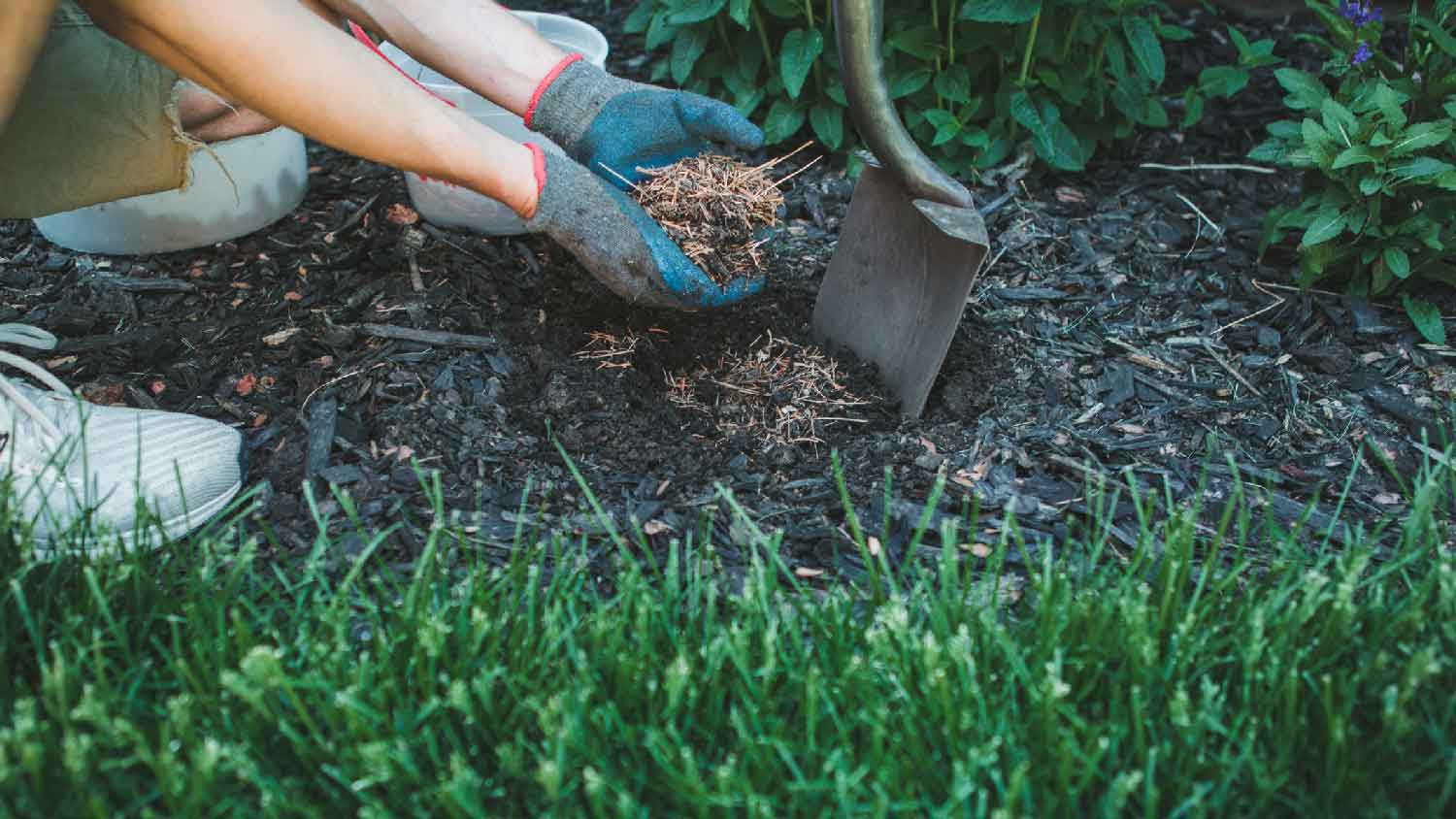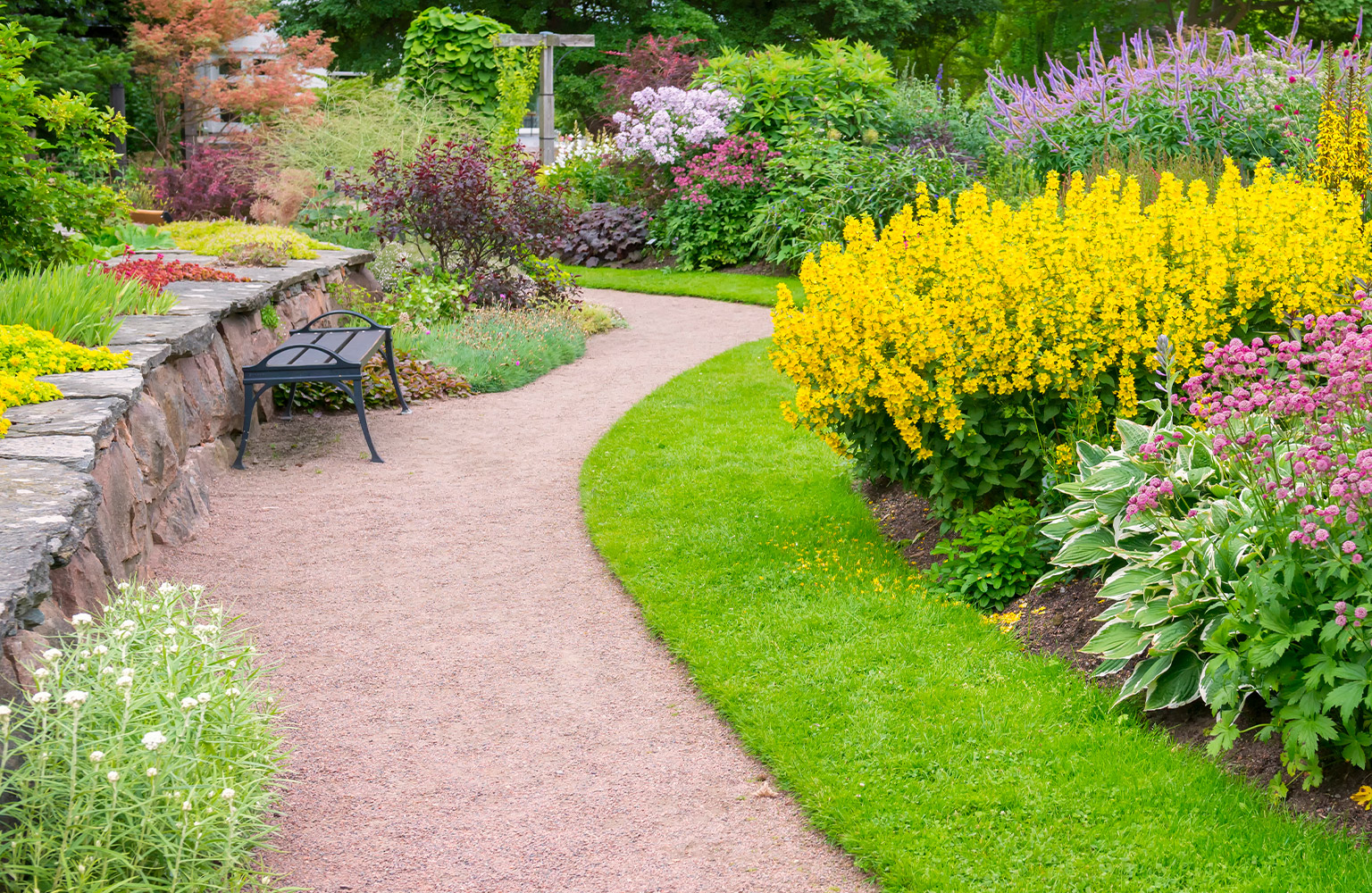
Discover the average forestry mulching cost, including per-acre and hourly rates, plus key factors that impact your total price. Get expert tips to save on your project.
You don’t always need to get rid of that old mulch


Removing old mulch deters pests and improves the aesthetics of your space.
Keeping old mulch helps retain moisture, suppress weeds, and improve soil health.
If old mulch is faded, crumbly, or showing signs of mold or pests, it’s time to remove it.
Mulch with consistent color, odor, and texture, with minimal weeds, can stay.
Mulching is an important gardening technique that can moderate temperature, conserve moisture, reduce weed growth, improve soil health, and enhance the aesthetic appeal of your home. If you have old mulch, you may wonder if you should keep it or remove it.
The answer depends on several factors, such as your garden type, weather conditions, mulch condition, plant needs, budget, and personal preferences. Let’s dive deeper into old mulch removal so you can decide whether it makes sense for your yard.
In some cases, it’s a good idea to remove old mulch. You might want to consider it if you’d like to:
Reduce the Risk of Pests: If you’d like to steer small rodents and insects away from your garden, it might be worthwhile to get rid of old mulch. Old mulch can attract pests, which can wreak havoc on your plants.
Enhance Aesthetics: Old mulch can take a toll on the aesthetic of your plants and flowerbeds. You might want to get rid of it and add new mulch for a cleaner, fresher look.
Install Landscape Fabric: Landscape fabric can prevent weeds and control erosion. If you plan to install it, you’ll need to remove old mulch first.
Improve Nutrient Distribution: When mulch decompresses, its nutrient content changes. You’ll want to remove old mulch and replace it with new mulch to ensure your plants get the nutrients they need.
You should keep old mulch if your goal is to:
Save Time and Money: It can be expensive and time-consuming to remove old mulch. Unless you’re displeased with old mulch or it’s causing issues, you can simply add a layer of fresh mulch on top of it. This is a particularly good idea if you’d like to save on mulch installation cost.
Retain Moisture: Thick layers of mulch can hold moisture well. If you keep old mulch, your soil will likely retain moisture better, especially when it’s hot and dry outside.
Suppress Weeds: If you’re tired of pulling weeds and want to keep them at bay, you should keep old mulch. Thick mulch is often more effective at weed suppression than new, thinner layers of mulch.
Keep Your Soil in Optimal Shape: Old mulch that continues to break down is loaded with essential nutrients. If you’d like to add more nutrients and organic matter to your soil, let it be.

Here are some telltale signs mulch removal should be on your radar.
Faded Color: If the mulch no longer has its original hue and looks faded, there’s a good chance it’s decomposing and may need a replacement. New, vibrant mulch can give your garden an instant makeover.
Crumbly Texture: Touch the mulch to get a feel for its texture. If you notice it’s crumbly or easily breaks apart, you should consider removing it.
Pests and mold: Insects and small pests in your garden may indicate your mulch is too thick and may benefit from removal. The same holds true for mold and mildew.
Reduced Depth: If your mulch has a depth of less than two inches, it’s likely breaking down and needs to be removed.
If your mulch shows any of these signs, it’s likely useful and can be kept.
Retained Color: Vibrant color like a rich brown or a red tone means your mulch is in good shape and doesn’t need to be removed.
Neutral Odor: If your mulch has no smell or an earthy, mild aroma, don’t worry about removing it.
Consistent Texture: Useful mulch that doesn’t need to be replaced should feel firm and stay together without any issues.
Minimal Weeds: It’s unlikely that you need new mulch if your current mulch is doing a good job of keeping the weeds away.
Removing old mulch before adding new isn’t required, but it generally looks better. Mulch fades over time, especially when planted in direct sunlight. Old mulch will show through the new layer—especially with stark colors like black mulch.
To get rid of old mulch, scoop it up with a shovel or your hands and put it in a container. If the mulch is too packed and can’t be broken down, loosen it with a rake. Then, put the larger pieces into a container. If your mulch is hard and you’re struggling to remove it, it may be worth it to call a mulch pro for help.
A mulch delivery service near you may also offer removal services. This might also make sense if you notice fungus or a foul odor that makes the task extra challenging. They can also provide valuable mulching tips you can use in the future.
From average costs to expert advice, get all the answers you need to get your job done.

Discover the average forestry mulching cost, including per-acre and hourly rates, plus key factors that impact your total price. Get expert tips to save on your project.

Discover the average sand delivery cost, key price factors, and tips to save on your next project. Get transparent, up-to-date estimates for sand delivery.

Gravel is an inexpensive paving material overall, but costs vary by type. Find out what average gravel prices will look like for your project.

Different types of mulch have different uses in your landscaping. Learn which mulch types are best to use on your property.

How long does rubber mulch last? It can last over a decade, making it a long-lasting alternative to organic mulch. Learn about its lifespan and maintenance.

Organic mulch improves soil quality, holds in moisture, and helps plants thrive, but how does it work? Learn how mulch can improve your yard.